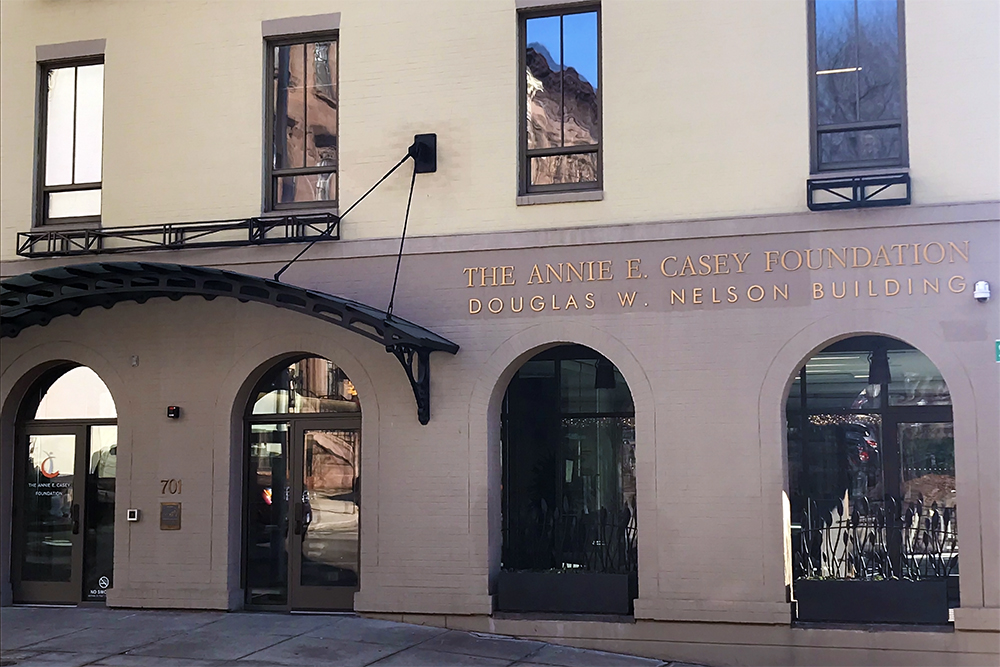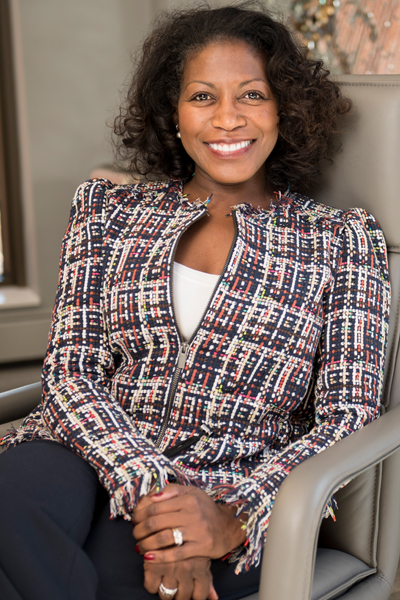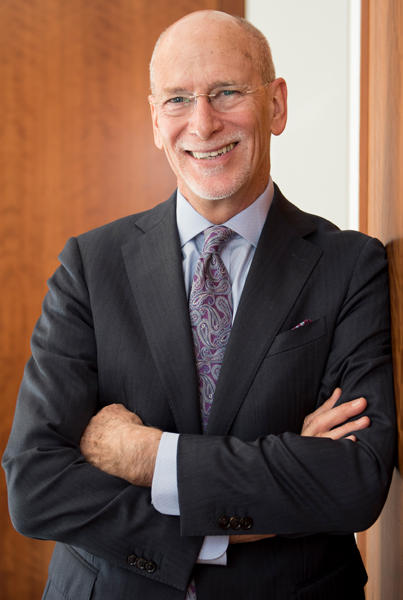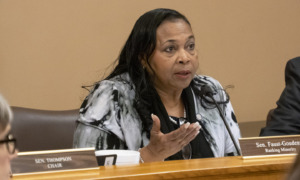
Annie E. Casey Foundation
.
BALTIMORE — When Patrick McCarthy first had lunch with Lisa Hamilton more than a decade ago, he remembers thinking, “She really sounds like a Casey person.”
At the time, Hamilton was president of The UPS Foundation and McCarthy was senior vice president of the Annie E. Casey Foundation. Both philanthropic organizations were founded by UPS creator James E. Casey. Hamilton was serving on Annie E. Casey’s Board of Trustees.
“I always remember that even though she wasn’t a subject matter expert at the time, she would ask a question or make a comment that would move the discussion to a more productive place. I thought, ‘Man, she’s smart,’” said McCarthy, recalling their board meetings.
In 2011 Hamilton accepted a job offer from McCarthy, who had become CEO, and joined the foundation as vice president of external affairs. Eight years later, she is making history as the first woman and first person of color to lead the organization, replacing McCarthy, who has retired.
“I’m very excited and humbled, and nervous in ways as well. It is a big responsibility,” she said during a recent interview at Casey’s Baltimore headquarters.
As president and CEO, she plans to keep many of the responsibilities she had as executive vice president and chief program officer and take on a few new ones, such as overseeing internal operations and representing the foundation on the national stage.
Founded in 1948, the foundation is known for releasing national and state-by-state data on issues affecting disadvantaged children. It’s grown into one of the largest private charities in the country, distributing more than $2.2 billion in grants to support children’s programs and policies since 2007. The organization employs 200 people and has a current endowment of roughly $2.7 billion.
Hamilton’s proudest accomplishment at the foundation so far was spearheading a new report that addresses barriers faced by children of color, she said. First released in 2014 and updated in 2017, the “Race for Results” study provides data on how kids are faring at every step of their development, from birth through adulthood.
“It makes it painfully obvious that kids of color face extraordinarily steep barriers and challenges in the path to adulthood,” she said. “What was exciting to me was that it didn’t just change the conversation and the way the field looked at things, but it also changed Casey … it made us see that we needed to deepen our commitment to racial equity.”
She’s a first

Lacey Johnson
Lisa Hamilton
When asked how she feels about being the first woman of color to lead the organization, Hamilton said it’s an honor to help clear the path for millions of young people who look like her.
“The majority of children in this country are soon to be children of color,” she said. “I was one of those children, not that long ago. So I appreciate that my appointment, to many people, symbolizes a reflection of the country … I represent all those millions of kids in families of color who are looking for a brighter future, and I hold that responsibility very close to my heart.”
Hamilton earned a law degree from the University of Michigan in 1994 and began her career as a tax lawyer in her native Atlanta. She went on to hold a variety of positions during her 14 years at UPS, including tax researcher, Washington lobbyist, president of The UPS Foundation and ultimately vice president of public relations. She has always been interested in social justice issues but only discovered her passion for helping disadvantaged kids after getting involved with Annie E. Casey.
“It has just been an extraordinary journey. I became enamored with our mission first as a trustee, but it deepened as I became an employee,” she said, noting how the skills she picked up in the corporate world helped her grow into an effective champion for kids.
“She is solution-oriented and always ready to roll up her sleeves to tackle any problem or issue,” said Cheryl Washington. “I’m looking forward to working with her more closely in the future.” Washington is the president and CEO of the East Baltimore Development Initiative (EBDI), a nonprofit working with the Casey Foundation and other partners to revitalize and rebuild that neighborhood.
“I’ve always known her to have a brilliant mind with a heart for children and families,” added Washington, who got to know Hamilton about seven years ago when she was a trustee on Casey’s board.
Hamilton is married and mother to a 15-year-old. When not spending time with her daughter, she enjoys reading, bicycling and catching the occasional Broadway play in New York. To celebrate her promotion, she planned a special trip to Cuba.
“I try to take in all the beautiful, creative things the world has to offer,” she said.
Regarding leadership style, Hamilton believes the key to running a foundation like Annie E. Casey is relentless positivity and hope.
She is known around the office for her enthusiasm and good humor.
“We face lots of headwinds, but there are lots of reasons for us to believe that we can do good things to help kids, and so I try to remind us of that every day,” she said.
McCarthy changed ‘Casey brand’

Lacey Johnson
Patrick McCarthy
Annie E. Casey was a much smaller place when Patrick McCarthy accepted a job as senior associate for its mental health initiative in 1994. He was the foundation’s 50th employee, when the endowment had just reached $1 billion.
Despite living more than 100 miles away in Philadelphia, McCarthy agreed to make the four-hour round-trip journey to Casey’s new Baltimore headquarters each day — a routine that lasted 16 years until he was appointed president and CEO in 2010. With their four children no longer in school, he and his wife agreed it was finally time to move to Maryland.
“I had this huge, heavy briefcase,” he said, recalling all the work he used to lug onto the train for his daily commute.
In Pennsylvania, McCarthy had been working as the senior program officer at the Center for Assessment and Policy Development, a nonprofit focused on improving outcomes for children, families and communities. He began his career as a psychiatric social worker in New Jersey in the early 1970s and later served as director of the Division of Youth Rehabilitative Services at Delaware’s Department of Services for Children, Youth, and their Families.
When he joined Annie E. Casey, the foundation was launching a number of large-scale, multimillion-dollar initiatives focused on tackling issues like mental health, jobs, teen pregnancy and community building. Those sorts of projects defined “the Casey brand” at the time, McCarthy said. Today the charity has shifted gears to focus more on strategic partnerships.
“We’ve become more conscious of the need to fit tactic to whatever the challenge or problem is,” he said. “We’re deliberately, intentionally, much more networked than we ever were.”
Much of that networking happened during McCarthy’s tenure as CEO, when he realized the foundation needed to cut spending following the 2008 recession. He said it was a major challenge that ultimately sharpened Casey’s investment strategy.
‘Racial and ethnic equity’-centered
He also made some controversial decisions, like shutting down Casey Family Services, which provided foster care and child welfare services in Baltimore and New England for more than 35 years. The program was averaging $35 million in annual costs, and he believed that money could help more kids if it was invested elsewhere. About 300 people were ultimately laid off and foster children were transferred to other agencies.
“We all knew of other organizations that were much, much larger that were getting terrific results at less cost,” McCarthy explained. “It was a very hard decision, but it was the right one.”
Under his leadership, Casey launched a number of initiatives focused on helping minority children succeed, such as Generation Work, which helps with job training. It also released new research and policy recommendations aimed at keeping children out of youth prisons.
“While we have always had a sensitivity to and a focus on the importance of race in all the work we did, I think during my tenure as CEO we moved racial and ethnic equity and inclusion to the very center of what the organization does,” said McCarthy, who plans to work on juvenile justice reform and closing youth prisons after his retirement.
“It has been a pleasure working with Patrick. His voice of reason has always provided wise counsel,” said EBDI’s Cheryl Washington. McCarthy served on EBDI’s board of directors for several years — a role that Hamilton will soon fill.
“At my retirement party the other night, I quoted from Shakespeare, which I’ve never done before,” McCarthy recalled with a smile. “It’s a line from Hamlet that says, ‘Lord, we know who we are, but we don’t know who we may become,’ and that’s really how I feel about this place.”
McCarthy said he doesn’t plan to serve on Casey’s board now that he has stepped down, and he looks forward to Hamilton taking the foundation in a new direction.
“Open the window; let the fresh air come in,” he said.





























